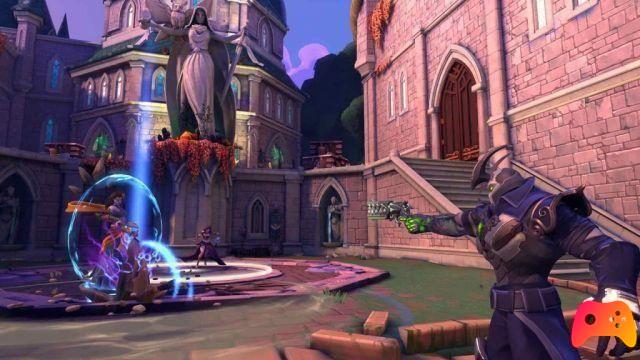Review for Tokyo Xanadu. Game for PlayStation Vita, the video game was released on 30/09/2015
Have you ever wondered what would happen if they merged the Ys series battle system with Trails of Cold Steel gameplay, adding some mechanics already present in other JRPG series, such as Persona? No, definitely not, hard to think. It takes a little imagination in deciding to mix everything, but above all to make it efficient.
Nihon Falcom succeeded, and the result is called Tokyo Xanadu. Let's talk about a Action JRPG developed by Nihon Falcom which will be distributed by Aksys Game. The title came out on June 30 2017 in Europe, at the same time as America, but the distribution of physical copies is suffering delays, making the title available only digitally on the PS Store to the figure of 44,99€.
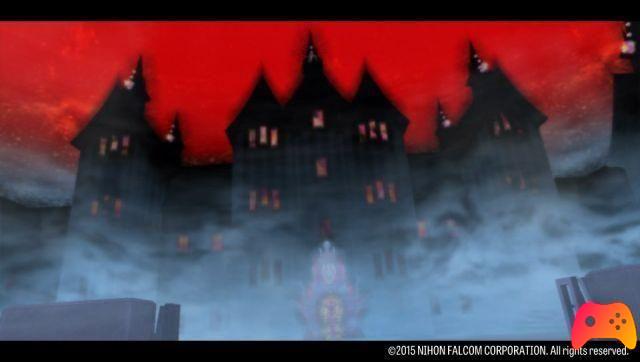
Student morning, Greed hunter in the afternoon
In Tokyo Xanadu we will play the role of a second year high school student, Kou Tokisaka. The boy lives alone, as his parents are forced out of Japan for a long time for work reasons. While attending Morimiya Academy in the morning, Kou uses the remaining free time to work in order to support himself.
Disturbing this routine will be an event that will drastically change his life for the months to follow. One late afternoon, after finishing his part-time job, Kou notices that his classmate Asuka Hiiragi is about to be bothered by two thugs. As he prepares to intervene, a mysterious red portal materializes, engulfing the two thugs. Asuka voluntarily enters the portal, and Kou follows her.
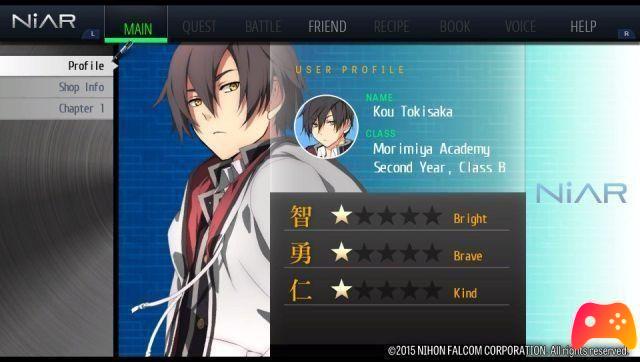
The student will discover that the portal leads into the Eclipse, a parallel reality triggered by several events taking place in the real world. The Eclipse often takes the form of labyrinths that the player will have to complete while getting rid of the Greeds, mysterious creatures that live within them that attack anyone who stands up against them. Following these events, Kou will awaken his Soul Device, a unique weapon that has the potential to delve into portals and face their dangers.
Soon Kou will find himself following a very difficult road with his friends, aimed at discovering a very bitter truth. Although the storyline is slow to mesh in the early stages and can be easily predictable from some points of view, it develops a lot more once you get the first party members: they will add interesting twists that will keep the player's curiosity alive for the remaining duration of the game.
The double life of Kou Tokisaka, completely managed by the player
As guessed by the game's prologue, Kou will have to manage his time in order to keep both his life as an ordinary high school boy, with a part-time job, student duties and a social life, and that of the fighter he is was given the task of keeping the portals scattered around Tokyo at bay.
Once you have the first party members, we will be able to freely explore all the portals already visited without time passing, in order to train the group and collect materials.
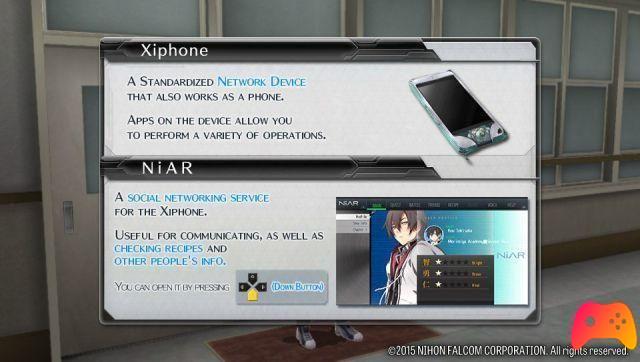
But that's not all: Kou will be able to make friends with many people and strengthen bonds with his teammates. If you know the mechanics introduced in Persona 3, or Social Links, you will already have a pretty clear idea of what we're talking about. You can use portions of free time, indicated in the screen at the top right in the form of "fragments", to spend time with friends.
Doing this will lead to greater development of the character in question, expanding the background and adding scenes to future portions of the game. Additionally, whenever a bond strengthens, Kou and the companion in question earn Soul Points to unlock new combat skills.
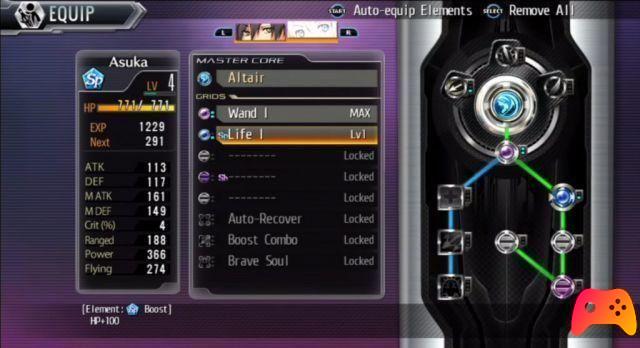
As in Persona 3, Kou will also have personal parameters that will level up depending on the actions he performs during his free time. These parameters, Courage, Wisdom and Virtue, if raised significantly will allow Kou to advance more smoothly in the last stages of the game, as well as being a necessary pre-requisite to unlock the True Ending route.
The remaining free time phases will allow Kou to carry out sidequests in order to obtain funds, items and increase the Virtue parameter, or go and have fun with the numerous mini-games present in Tokyo Xanadu.
The way Falcom has managed to handle all of these mechanics is excellent. Who will play Tokyo Xanadu can easily choose what to do, without suffering the pressure of time elapsed. The fragments are limited (ranging from 2 to 4 per day), but distributed proportionally to the arrival of new characters with whom Kou can strengthen the bond, not to mention that additional fragments are obtainable by completing some optional portals. All other available actions will NOT advance the story: this will only happen when we find ourselves entering a specific place indicated on the map. The player will be able to train in the mazes at will, as well as perform various game actions, such as taking part in mini-games, reading books or more.
An urban setting far from the typical Falcom Fantasy
Something that immediately catches the eye of those who are playing Tokyo Xanadu, and who has played several series made by Falcom previously, is the setting.

It is typical of Falcom to set a story and characters in a Fantasy setting, but here the characters are ordinary high school students in a fictional Tokyo of today. You can move from Morimiya Academy to shopping centers, passing from Acros Tower where often a group of Idol perform, to end up in arcades typical of the streets of today's Japan.
To reinforce the idea of a current concept is the use of Xiphone, a particular version of our typical Smartphones with more features. Thanks to NiAR, Kou will be able to access Social Media, view all the information on the characters of the game and on the entire universe of Tokyo Xanadu.
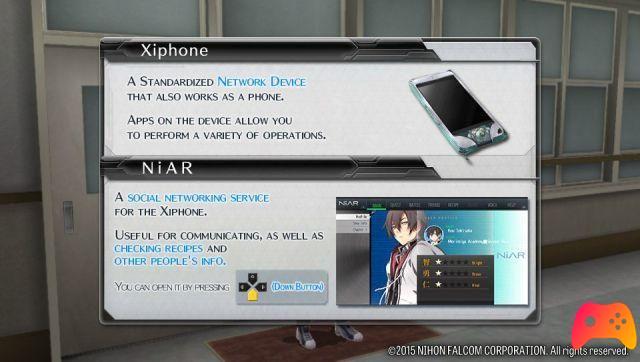
In addition, requests for help from other people - the classic sidequests - are posted online on the NiAR, and information on recipes that Kou and the other party members can follow to prepare dishes that will give bonuses to parameters and heal energy during explorations in the labyrinths. Basically the NiAR will be a valid ally for those who embark on this adventure, as it is full of essential information and with an intuitive and modern interface.
The Battle System, where Tokyo Xanadu shines the most
Those who love the Ys series, also from Falcom, will have a pleasant surprise. Not only does the Battle System resemble it, it is also much more varied in terms of usable characters and mechanics within the system itself. The battle commands are quite simple as they are versatile and we can summarize them in:
- Ground Melee Attacks: standard attacks chained into a simple combo;
- Mid-Air Melee Attacks: a combination of mid-air attacks after making a jump;
- Shots loaded in place: they are particularly powerful blows, used to inflict massive damage but also to break through cracked walls. The character can make the charged attack only by standing still in place;
- Charge in mid-air: The character projects forward for a long distance after taking a jump. In addition to inflicting damage, it is the only method to reach certain points of the mazes otherwise unreachable;
- X-Strike: Once the hex in the character gauge is loaded, a special technique can be used to inflict heavy damage on all enemies. Subsequently, by increasing the Soul Points of the character in question, you can perform an X-Strike together with an ally.
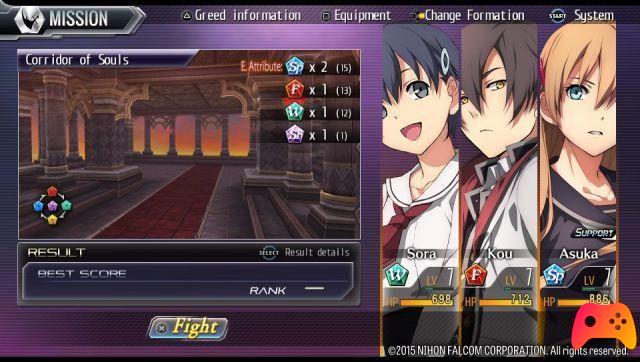
In addition to the protagonist, there are 7 playable characters in Tokyo Xanadu. Each of them has their own peculiarities and strengths and weaknesses. Although Kou is a fairly balanced character, the remaining party members behave differently. Some have longer range with melee attacks and are faster than others at the expense of power, while others have slower movement speed but hit much harder than others.
The growth system is practically the same as the Master Core found in the Trails of Cold Steel series. In addition to the classic Level Up obtained by defeating enemies, it is possible to strengthen specific parameters or abilities of the character in question by improving the slots present in the Master Core. To do this, simply use the upgrade materials and that's it.
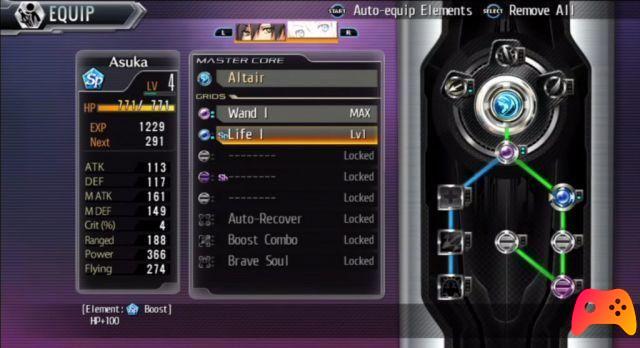
These slots can be used to assign an "Element" (also featured in the Trails of Cold Steel series) that will benefit the character in several ways. Using all the characters is the key to better coping with the mazes, as each of these is different and you will need characters who use different elements to complete the explorations without too many hitches.
Considering that Tokyo Xanadu is an Action JRPG rather than a tactician, you can feel more than satisfied with this system, simple but functional and suitable for those who do not want to waste too much time behind the menus. The fights are as frenetic as they are fun: during the explorations you will never stand still and facing the mazes will be a form of entertainment itself, without weighing on the player. The only flaw could be found in a slowdown in the fighting if there are many elements to interact, such as an excessive amount of monsters in battle, or monsters of large dimensions. However, this is a typical problem encountered in cross-platform games on PS Vita: According to what has been shown so far in the PlayStation 4 version coming for the end of 2017, Tokyo Xanadu EX +, this kind of problem has never been found.
A recycled graphics sector, devoid of innovation
Those who know Falcom's modus operandi already know that the house does not excel in this sector: we have a design repeated to the limit from the previous titles of the house, with no intention of improving, much less of "appearing different". The features of the characters of Tokyo Xanadu excessively recall those of Trails of Cold Steel: let's take respectively Towa Kokonoe and Towa Herschel as an example (which already say a lot from the name).
As much as one might try to "justify" a possible tribute to a previous title, such recycling denotes more than anything else the lack of desire to try something different from this point of view. There are already many cameos dedicated to other titles in the game, in addition to the mini-games where it is even possible to command two characters taken from Trails of Cold Steel (Rean and Alisa), and this should be more than enough. Towa, although it is the clearest case, he is by no means the only character drawn in Tokyo Xanadu who overly resembles protagonists in other series.
To break a lance in favor of a recycled design are the characters themselves, who albeit recall the various stereotypes present in the various video games made in Japan (Examples: Thug with dyed blond hair, actually kind inside or an authoritarian student council president, of rich family and formal ways), capture the player in one way or another, causing him to inevitably become attached to the entire cast of characters, some more, some less.
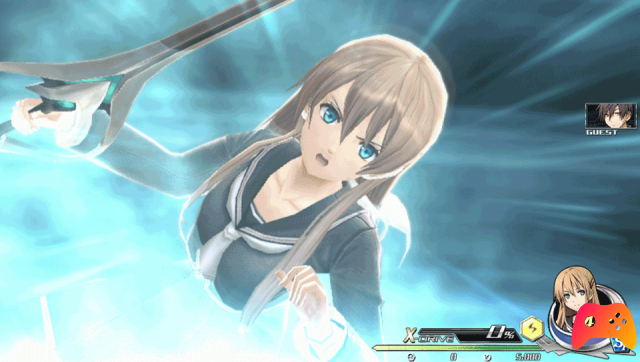
Also from a technical point of view unfortunately there are several gaps. Falcom has never been a summit from this point of view, and Tokyo Xanadu unfortunately confirms it once again. The animations are quite rigid and lacking in expressiveness, and even the mazes, (albeit with some exceptions), follow a fairly repetitive pattern. The same thing can be said for the realization of the Greeds and minor Bosses that house the Eclipse portals. Fortunately, given the speed of the fights and how engaging they are for the player, these defects can take a back seat if you are not meticulous..
A small positive note goes to a sound sector that does not excel, but is spot on in the right rhythms and modalities, both when the numerous activities for Morimiya take place, and when you are inside the portals to explore and fight.

Tokyo Xanadu undoubtedly has some small gaps scattered here and there, but it knows how to assert itself in the points where it must stand out. Fortunately, it is not these flaws that generally compromise the experience of a player looking for a good Action JRPG, especially on a console like the PS Vita. The large number of activities that you can do during your free time, as well as the great variety of characters to use in battle, will entertain the player with a never boring pace. The mix of other titles like Persona, Ys and Trails of Cold Steel works great, making Tokyo Xanadu an enjoyable experience for all fans of the genre.
► Tokyo Xanadu is an Action-JRPG game developed by Aksys Games Nihon Falcom Corporation and published by Aksys Games for PlayStation Vita, the video game was released on 30/09/2015






